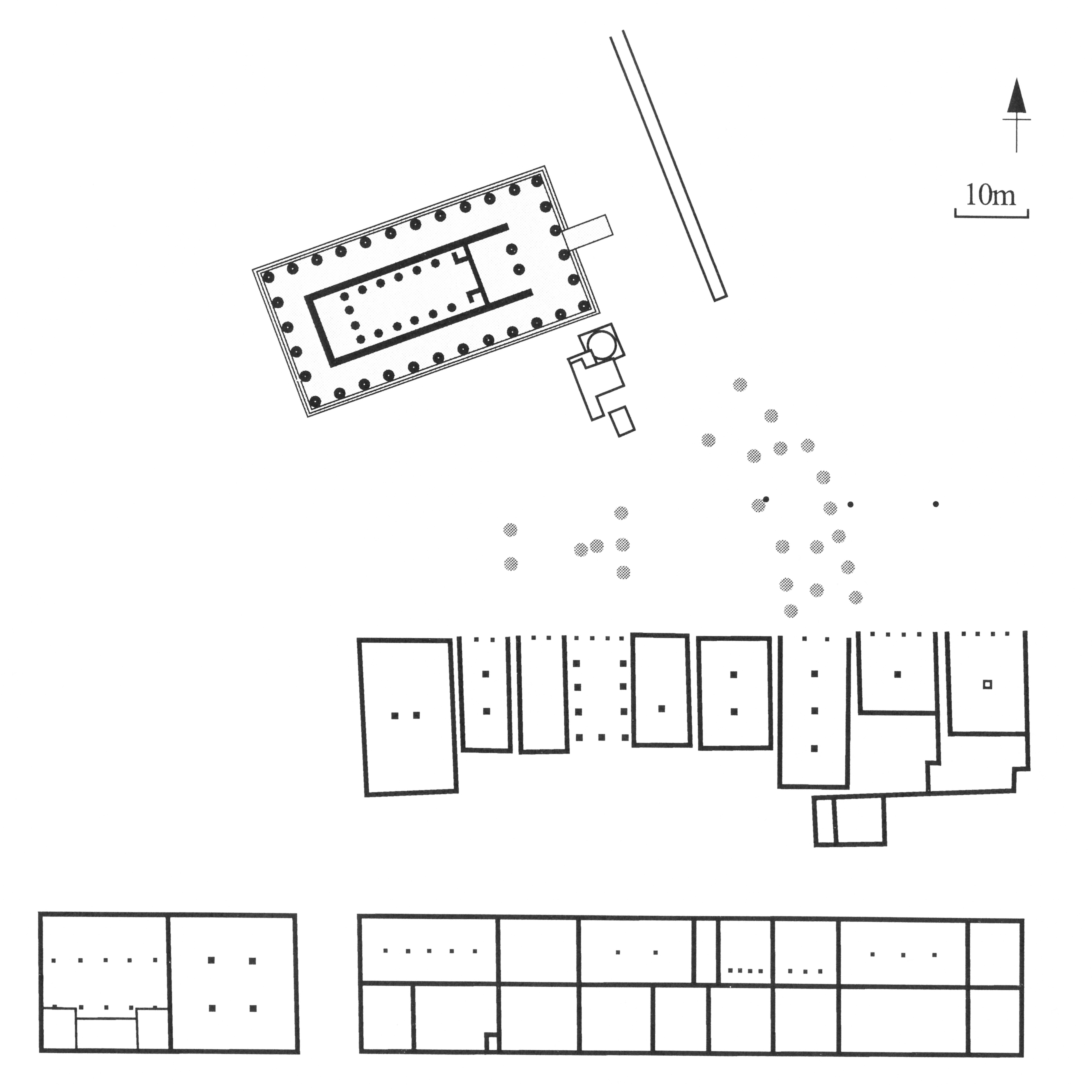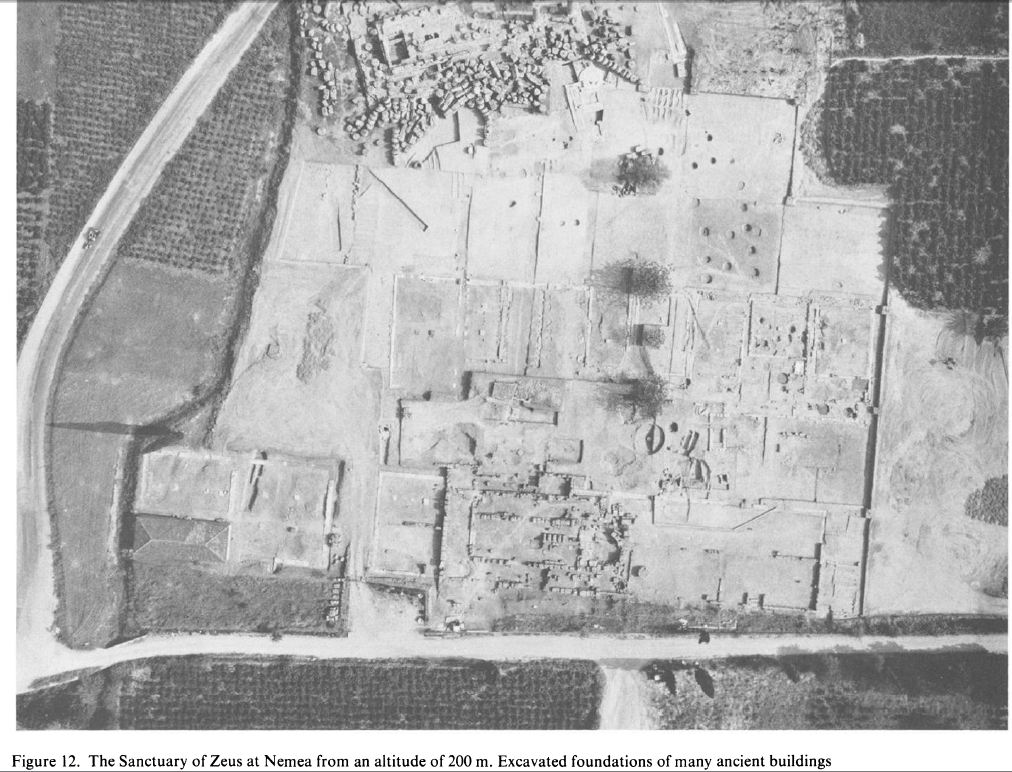Sanctuary of Zeus
Province
Province Description
Roman intervention in Greek political affairs resulted in conflicts that led to the destruction of Corinth in 146 B.C. and the sacking of Athens in 86 B.C. It was not until 27 B.C., however, that Augustus formally organized the Roman province of Achaea. Achaea consisted of the cities and territories of the southern Greek mainland between the Peloponnese and Thessaly, as well as Epirus in the northwest and the Ionian and some of the Aegean islands. The provincial capital was Corinth. Under Nero in the mid-1st century A.D. Epirus became a separate province, and in the mid-2nd century Thessaly was detached and added to the province of Macedonia. Under Roman domination many cities such as Athens, Sparta, Patras, and Corinth grew in size and prominence, the latter two partly owing to their importance as ports. After an initial decline in the number of rural sites in the early Empire, by the late Roman period the countryside was densely settled with farms and villas, due to changing landholding patterns and Roman improvements in agricultural and irrigation technology. The main exports from Achaea were wine, particularly from the northern Peloponnese, as well as olive oil and honey, linen and woolen textiles and marbles.
Location
Garden
Sanctuary of Zeus
Keywords
- Literary
- Archaeological
- Pausanias
- archaeobotany
- cypress (wood)
- cypresses (Cupressaceae)
- pits (earthworks)
- sacred groves
Garden Description
The grove of trees at the temple of Zeus is known through Pausanias’ description of it (2.15.2) and from archaeological excavations in the temple precinct. Excavations in the 1970s uncovered 23 planting pits cut out of the living rock on the south side of the temple (Fig. 1, gray circles on plan). The pits were up to 2 m. in diameter and on average 65 cm. deep. Some of the tree pits were cut in relatively straight alignment with each other, but the overall impression is one of a rather loose arrangement. According to Pausanias, the trees were cypresses. This was confirmed by the excavators who found carbonised remains of cypress wood at the bottom of the planting pits. The archaeological context of the planting pits suggests that the trees were planted in the 5th or 4th century B.C., and indeed literary references of the late 5th century B.C. allude to them (Euripides, Hypsipyle, Prologue lines 99-104; preserved in a papyrus fragment of 2nd-3rd century A.D.). Trees were obviously still standing in the 2nd century A.D. when Pausanias visited Nemea.
Plans

Fig. 1: Plan of the Sanctuary of Zeus at Nemea with rock-cut pits for trees (grey circles) between the temple and other sanctuary buildings. Adapted from Miller 1978, fig. 2.
Images

Fig. 2: Balloon photo showing the Temple of Zeus at Nemea with its replanted grove.
Dates
Trees were still standing in the 2nd century A.D. when Pausanias visited Nemea.
Bibliography
- S. G. Miller, “Excavations at Nemea 1976,” Hesperia 46,1977: 9-11; S. G. Miller, “Excavations at Nemea 1977,” Hesperia 47, 1978: 65. (worldcat).
- D. E. Birge, L. H. Kraynak and S. G. Miller, Excavations at Nemea. Topographical and Architectural Studies. The Sacred Square, the Xenon and the Bath. Berkeley, 1992, pp. 85-96, figs. 1, 98-103. (worldcat).
- M. Carroll-Spillecke, "The gardens of Greece from Homeric to Roman times," Journal of Garden History 12, 1992: 86. (worldcat).
- M. Carroll, "The sacred places of the immortal ones: ancient Greek and Roman sacred groves," in J. Woudstra and C. Roth (eds.), A History of Groves. London: Routledge, 2018: 14. (worldcat).
Pleiades ID
TGN ID
Contributor
Maureen Carroll (ORCID: 0000-0001-9958-8032)
Publication date
21 Apr 2021